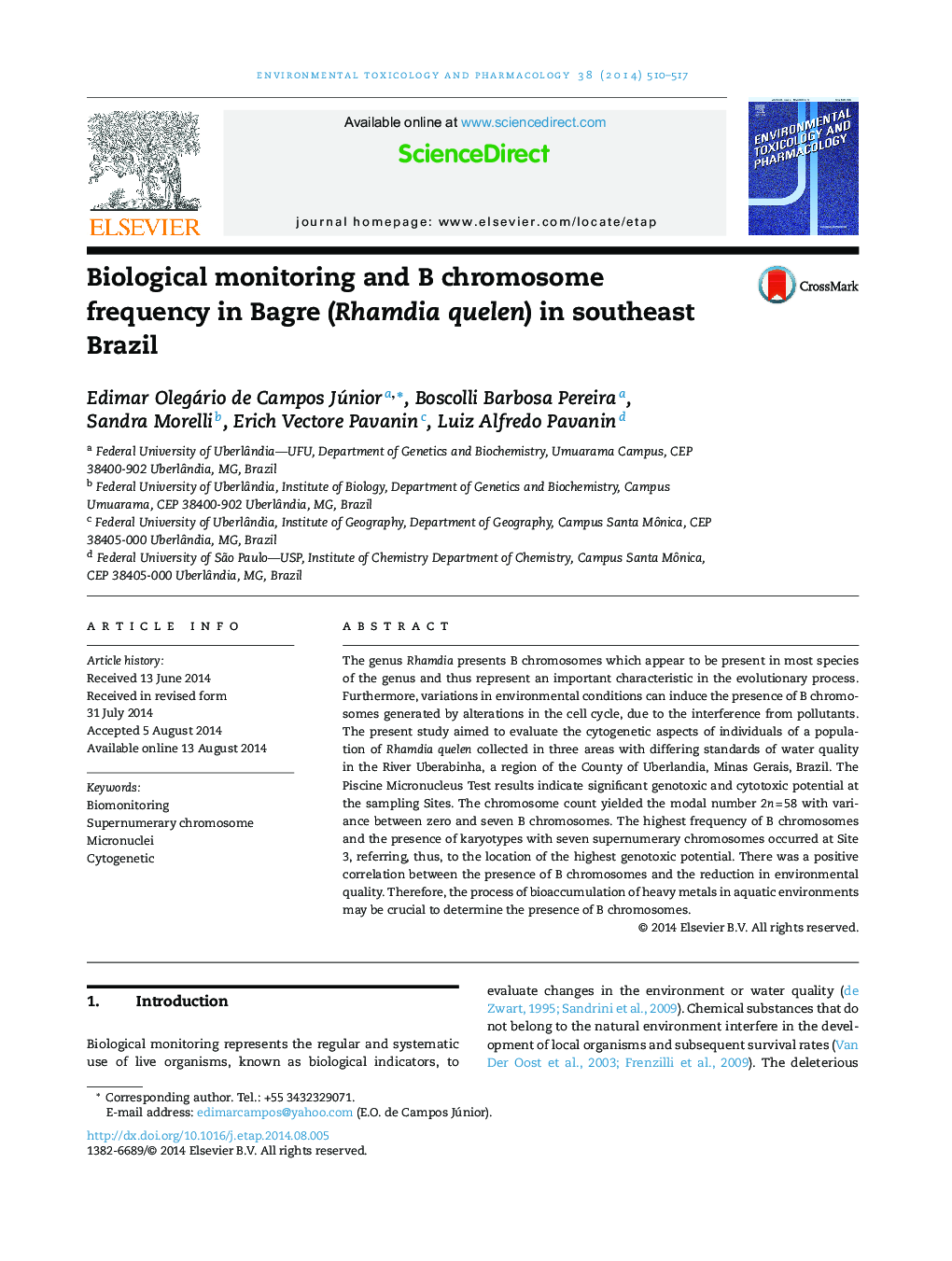| Article ID | Journal | Published Year | Pages | File Type |
|---|---|---|---|---|
| 2583610 | Environmental Toxicology and Pharmacology | 2014 | 8 Pages |
•The River Uberabinha demonstrated many indices beyond the limits of good quality.•Karyotypic differences were noted among individuals.•We report seven B chromosomes in Rhamdia quelen.•The biological (Micronucleus) test corroborated the chemical indices.•Genotoxic effects of lead and cadmium.
The genus Rhamdia presents B chromosomes which appear to be present in most species of the genus and thus represent an important characteristic in the evolutionary process. Furthermore, variations in environmental conditions can induce the presence of B chromosomes generated by alterations in the cell cycle, due to the interference from pollutants. The present study aimed to evaluate the cytogenetic aspects of individuals of a population of Rhamdia quelen collected in three areas with differing standards of water quality in the River Uberabinha, a region of the County of Uberlandia, Minas Gerais, Brazil. The Piscine Micronucleus Test results indicate significant genotoxic and cytotoxic potential at the sampling Sites. The chromosome count yielded the modal number 2n = 58 with variance between zero and seven B chromosomes. The highest frequency of B chromosomes and the presence of karyotypes with seven supernumerary chromosomes occurred at Site 3, referring, thus, to the location of the highest genotoxic potential. There was a positive correlation between the presence of B chromosomes and the reduction in environmental quality. Therefore, the process of bioaccumulation of heavy metals in aquatic environments may be crucial to determine the presence of B chromosomes.
